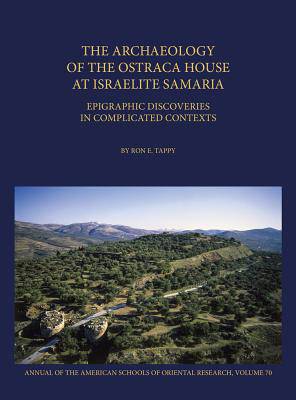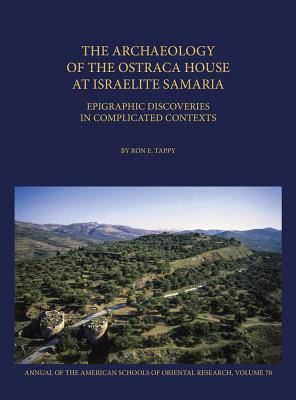
- Retrait gratuit dans votre magasin Club
- 7.000.000 titres dans notre catalogue
- Payer en toute sécurité
- Toujours un magasin près de chez vous
- Retrait gratuit dans votre magasin Club
- 7.000.000 titres dans notre catalogue
- Payer en toute sécurité
- Toujours un magasin près de chez vous
The Archaeology of the Ostraca House at Israelite Samaria
Epigraphic Discoveries in Complicated Contexts
Ron E Tappy
106,95 €
+ 213 points
Description
George Andrew Reisner counted the Israelite ostraca among the most important finds ever recovered by the Harvard Expedition to Samaria. But the precise provenance of these historic inscriptions has remained murky at best. To date, the most incisive and intuitive statement on their archaeological context comes from a brief treatment in I. T. Kaufman's unpublished 1966 dissertation written at Harvard University. The present study considers in much greater detail the depositional history of the Ostraca House and its immediate surroundings. The investigation proceeds on three distinct but related levels. First, it attempts to clarify the date and nature of the archaeological contexts from which excavators recovered the inscriptions. Second, it evaluates both the quantity and quality of data recovered and the overall manner in which the project leaders presented those data in their official excavation report. Finally, the study draws not only from published records but also from unpublished materials recorded in the handwritten daily journals and private diaries of David Gordon Lyon, George Andrew Reisner, Clarence Stanley Fisher, and Gottlieb Schumacher. Thus an important subplot unfolds as the analysis of archaeological remains advances through the narrative. The unpublished records not only provide supplementary data crucial to a study of the ostraca, they also enliven the story behind the discovery of the inscriptions and reveal the archaeological and administrative trials persistently faced by the excavators, who found themselves working betwixt and between international and local powers and events during the waning years of the Ottoman Empire and the coming of World War I. Still, the internal and external struggles of a start-up expedition cast within a bourgeoning academic field and the vicissitudes of world affairs did not prevent the Harvard Expedition from becoming one of the most influential projects of the early twentieth century.
Spécifications
Parties prenantes
- Auteur(s) :
- Editeur:
Contenu
- Nombre de pages :
- 240
- Langue:
- Anglais
- Collection :
- Tome:
- n° 70
Caractéristiques
- EAN:
- 9780897570954
- Date de parution :
- 30-11-16
- Format:
- Livre relié
- Format numérique:
- Genaaid
- Dimensions :
- 566 mm x 282 mm
- Poids :
- 997 g







